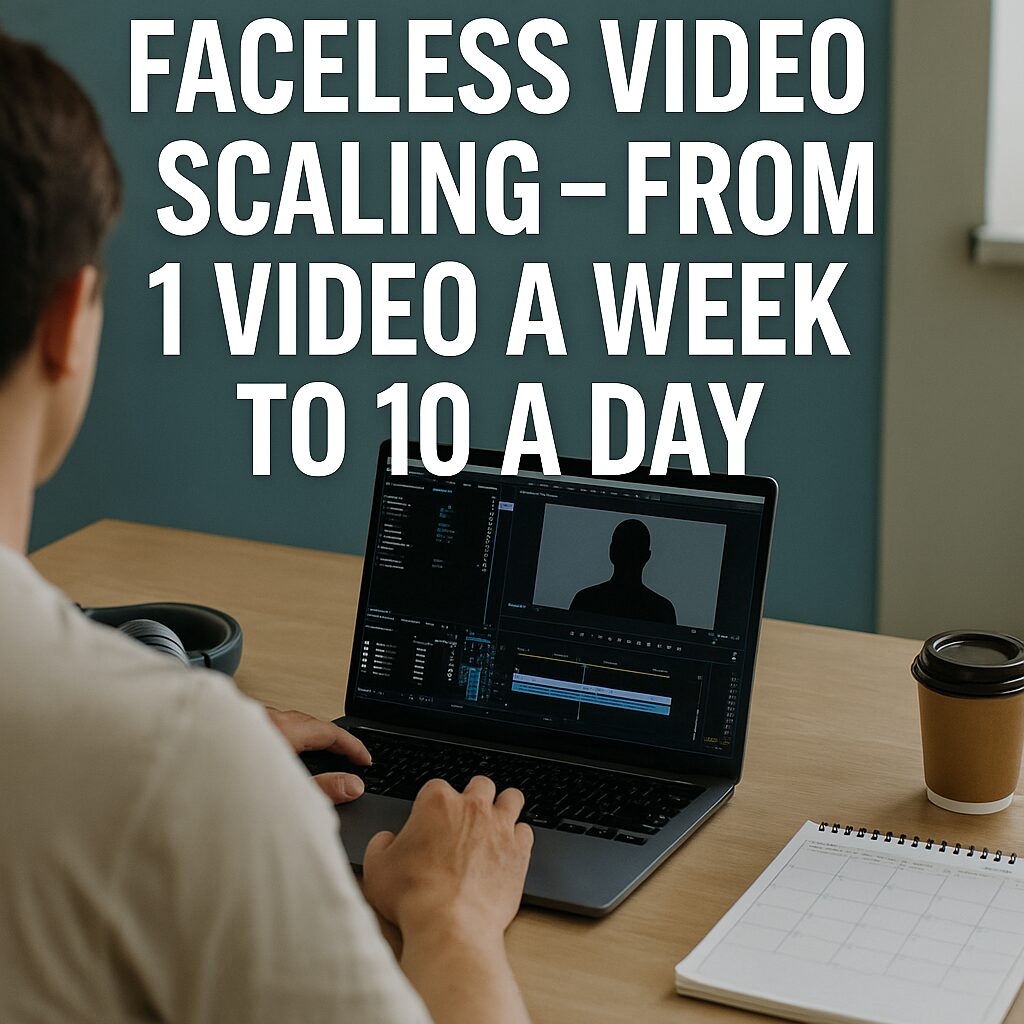(Part 9 of the Faceless Empire Series)
In the faceless video world, scaling isn’t just about quantity—it’s about sustainability. Once you’ve figured out how to produce multiple videos per day, the next logical step is to remove yourself from the process. This is where your Faceless Video Factory begins.
1. Why You Need a “Factory Mindset”
If you’re still editing, uploading, and checking every comment yourself, you’re not building a business—you’re stuck in a job. A factory mindset means creating systems and workflows that can be replicated, delegated, and automated.
The goal is simple:
👉 Work ON the system, not IN the system.
2. Create SOPs (Standard Operating Procedures)
Start by documenting every task:
- How do you write scripts?
- Where do you source AI visuals?
- What’s your thumbnail workflow?
- How do you schedule uploads?
Turn all of this into a step-by-step checklist anyone can follow.
Use tools like Notion, Trello, or Google Docs to organize them.
Once your SOPs are ready, you’re no longer the only one who can do the work.
3. Hire Smart (Not Big)
You don’t need a huge team. Start with micro-specialists:
- Scriptwriter (AI-friendly)
- Thumbnail designer (Fiverr or Upwork)
- Video editor (even part-time)
- Channel manager (optional, for uploads/comments)
You can find reliable freelancers on:
- Upwork
- OnlineJobs.ph (for long-term VAs)
- Fiverr
- Intern platforms or Discord groups
Pay per task, not per hour. Focus on output, not presence.
4. Automate What You Can’t Delegate
Some tasks are too repetitive or too small to assign—automate them:
- Use Zapier or Make.com to link platforms.
- Use CapCut templates to mass-produce Shorts.
- Use YouTube Scheduler or Metricool to auto-publish.
Automation ensures the factory never sleeps—even when you do.
5. Build a Content Pipeline (Assembly Line Style)
Set up a pipeline with clear steps like:
- Idea Bank – where new topics go
- Script Writing – human or AI-based
- Asset Creation – visuals, voiceovers
- Video Assembly – editing phase
- Review & QA – final polish
- Upload & Optimize – SEO, thumbnails
- Analytics Review – evaluate performance
Each person (or bot) in the chain handles just one task. That’s how you scale.
6. Let Go of Control (The Hardest Step)
Your goal is freedom, not perfection.
Yes, no one will do it exactly like you—but that’s okay.
If 80% of your vision is achieved by someone else, that’s better than you doing 100% forever.
Perfectionism is the enemy of passive income.
7. Review Monthly – Optimize Quarterly
Every month, review:
- What tasks still depend on you?
- What’s the bottleneck?
- Where can speed improve?
Every quarter, update your SOPs and tools. Your factory should evolve like a tech company—fast, efficient, data-driven.
Summary
The Faceless Video Factory = SOPs + Micro-Team + Automation + Content Pipeline
This is how you go from a solopreneur to an automated content machine.
Not only will your income grow, but your time will too.
Coming Up in Part 10
Faceless Empire Total Blueprint – Combine All 9 Parts into a 6-Figure Business Plan
→ Next, we’ll wrap up the entire series with a step-by-step roadmap to turn everything into a system that prints money (without showing your face).








